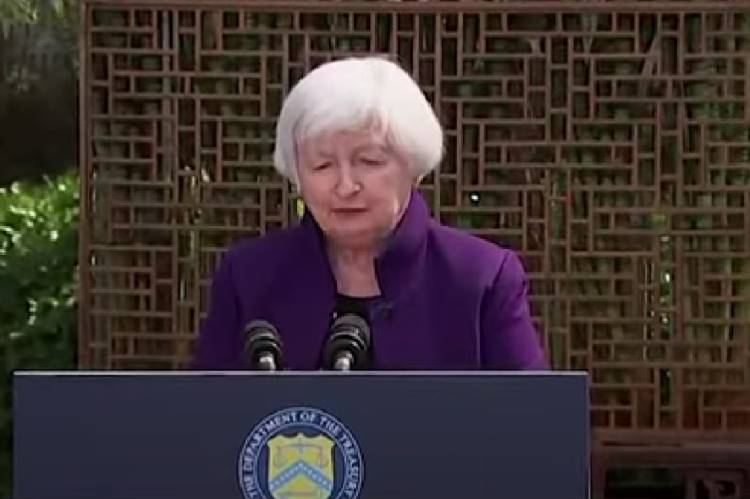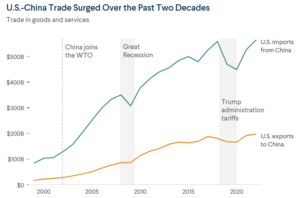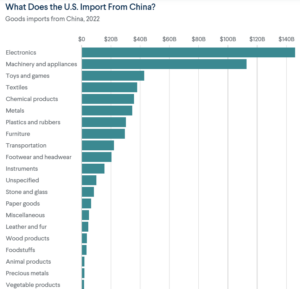
US treasury secretary Janet Yellen’s recent trip to Beijing is a critical event in US-China relations, in the context of the ongoing strategic rivalry between the world’s two largest economies in the areas of technology and trade. During the trip, Yellen addressed some significant issues, including the Biden administration’s concern over China’s economic practices, which purportedly disadvantage American businesses and workers. The discussions revolved around China’s subsidisation of industries like solar panels and electric vehicles, leading to market overcapacity.
This trip, following secretary of state Antony Blinken’s recent visit, was part of a broader US effort to stabilise the country’s tense relationship with China. Yellen’s visit came close on the heels of Beijing’s decision to control exports of key materials like gallium and germanium, a move seen as a counteraction to US restrictions on chipmaking equipment sales to China. This tit-for-tat approach is typical of the strategic competition at play, particularly in the high-stakes technology sector where both nations are vying for dominance.
READ I From remittances to robotics: Redefining India’s external sector in a tech-driven world
Gathering clouds in US-China relations
China’s meteoric economic rise has transformed it into the US’s biggest economic and military rival. This rivalry extends beyond trade and technology, encompassing military presence in the South China Sea and competition for influence in developing countries. Both nations are investing heavily in advanced weaponry and military modernisation, fuelling anxieties about a potential arms race. The US seeks to maintain its global pre-eminence, while China strives to establish itself as a leading world power. This struggle for dominance casts a long shadow over US-China relations, influencing every aspect of their interaction.
Yellen sought to reopen economic dialogue while also addressing national security concerns. The US is trying to balance trade and investment in non-sensitive sectors with the need to protect its national security and human rights interests. This approach reflects a broader strategy of de-risking, aimed at reducing reliance on China in critical supply chains without completely decoupling economically.


Yellen’s trip was set in the backdrop of international diplomacy and domestic politics in both the US and China. The US is keen to retain its influence and safeguard its interests in the Asia-Pacific region, while China is pushing back against what it perceives as American encroachment on its sovereignty and economic development. The geopolitical rivalry is further complicated by internal pressures within both countries, where nationalistic sentiments and political agendas can influence foreign policy decisions and impact bilateral negotiations.
A number of hotly contested issues continue to be major stumbling blocks in US-China relations. These include human rights concerns surrounding China’s treatment of Uyghur Muslims and political dissidents, as well as Taiwan’s status as a self-governing island that China claims as part of its territory. The US maintains unofficial ties with Taiwan, which China views as a provocation. These sensitive issues inflame tensions and make building trust a significant challenge. Without progress on these issues, a truly cooperative relationship between the US and China seems unlikely.
There is a long-standing trade conflict between the US and China, which has seen both nations impose significant tariffs on each other’s exports. The economic fallout from this conflict has been substantial, leading to trade diversion and shifts in global supply chains, particularly affecting the Asian region. Despite a slight easing of tensions with the Phase One Agreement in January 2020, the core issues remain largely unresolved, with tariffs still elevated and the trade war’s broader economic impact still being felt globally.
The US administration is also keen on discussing other critical areas like military engagement and climate change. Meanwhile, China sees these dialogues as opportunities to soften the US stance on export and investment restrictions.
Amid these strategic calculations, there are also global economic concerns that loom large over US-China relations. The world economy’s health, already rattled by recent disruptions, is sensitive to the dynamics of this bilateral relationship. Issues like global market stability, supply chain resilience, and economic recovery from the pandemic are interconnected with how the US and China manage their trade and technological disputes. Therefore, the broader international community keenly watches the outcome of these engagements, understanding that the ripple effects can extend far beyond the two nations’ borders.
Investors and analysts are watching closely, aware that the underlying economic and technological issues might limit the scope for meaningful reconciliation. The strategic rivalry suggests that US-China relations will continue to be carefully managed through competition and cooperation.
